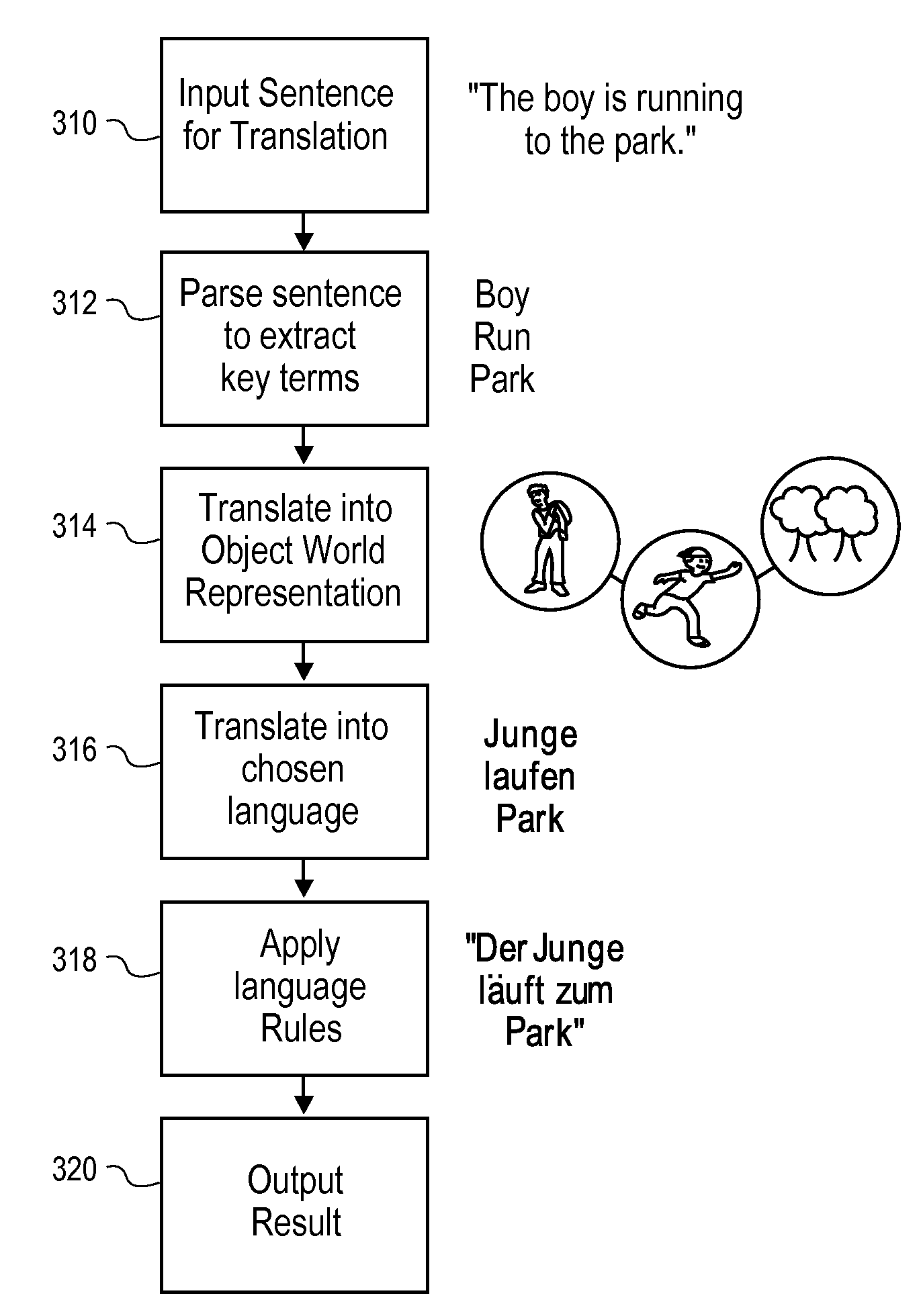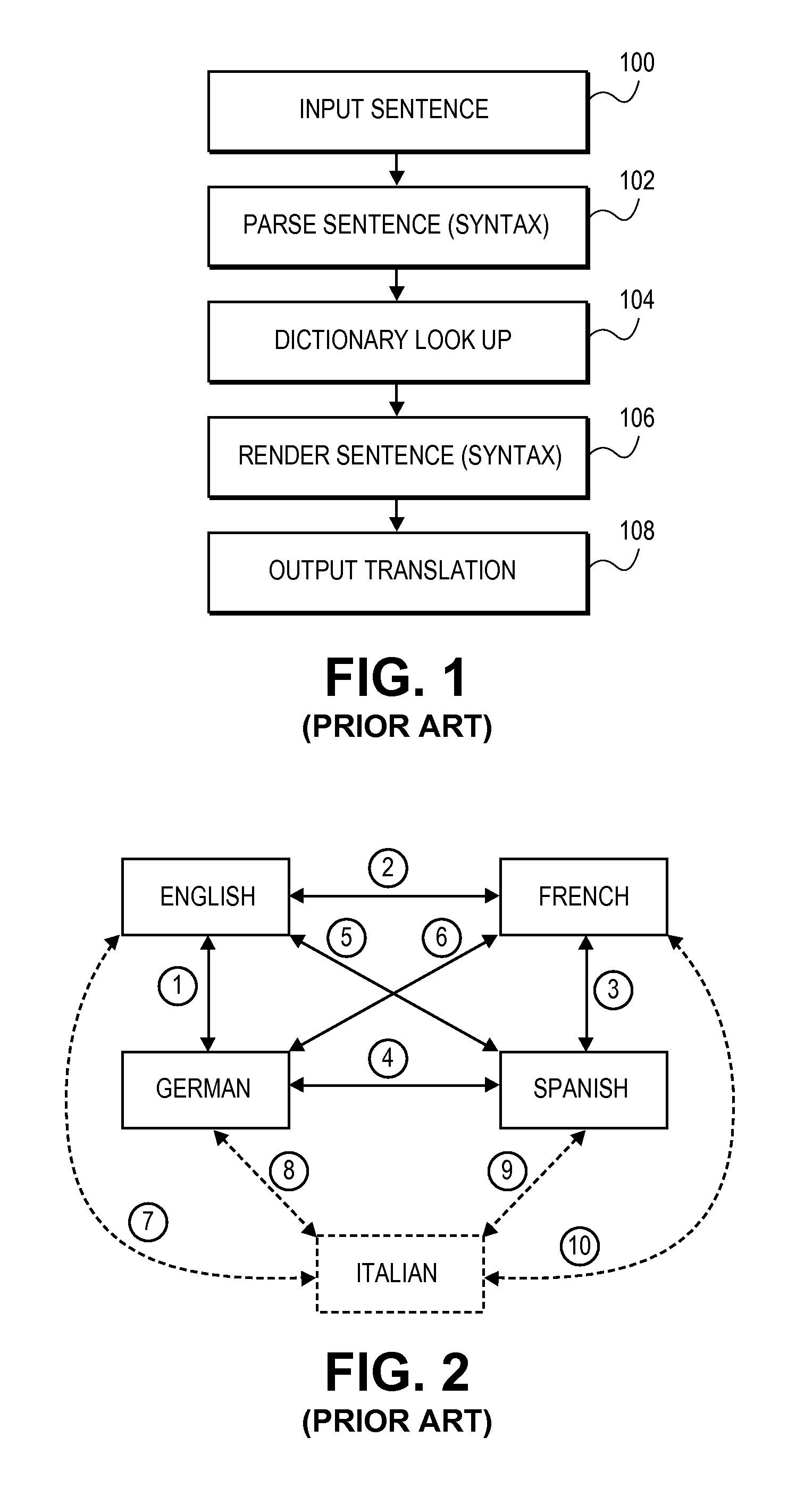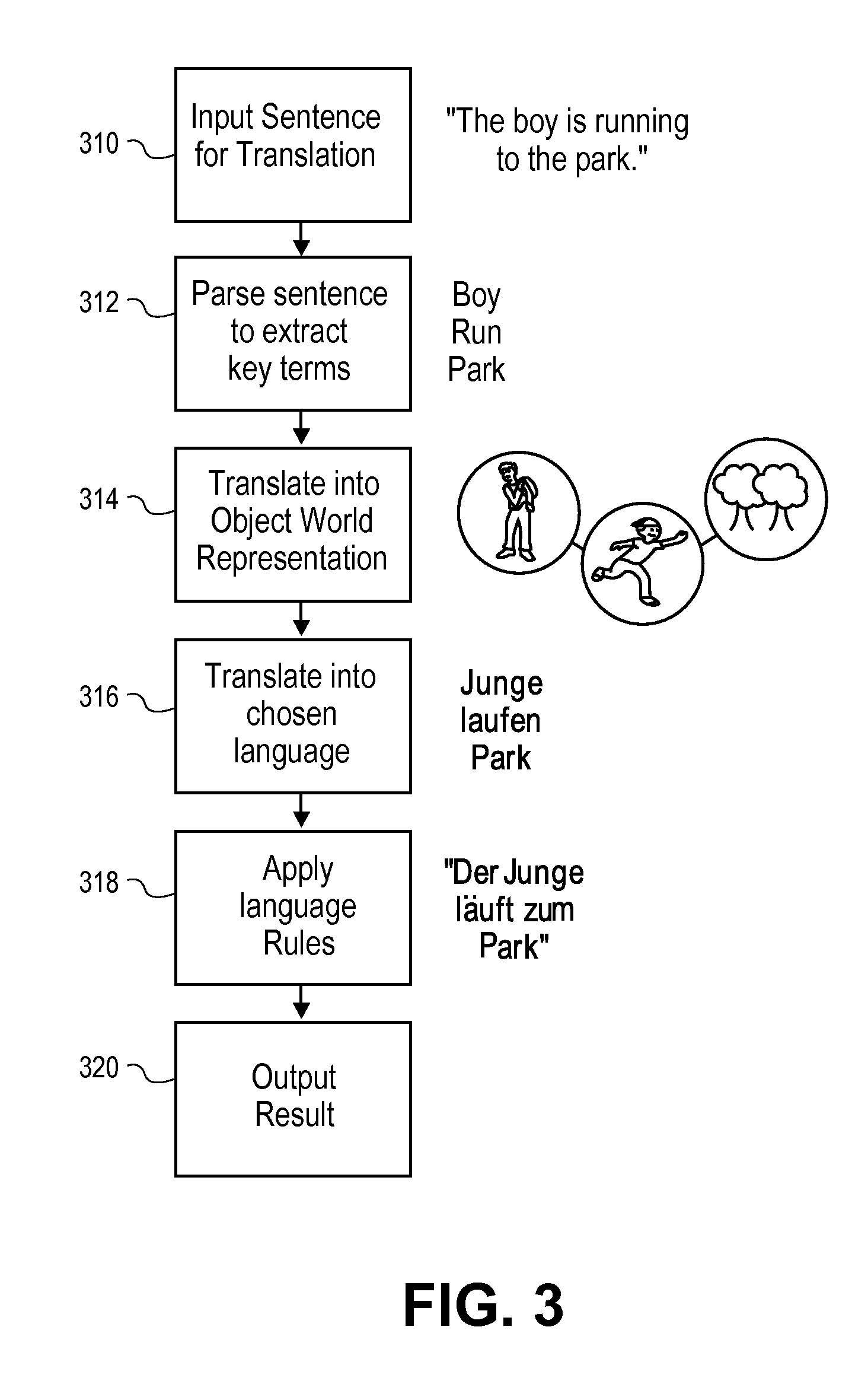Language processing systems and methods
a technology of language processing and language processing, applied in the field of translation systems, can solve the problems of -word system employing isolated analysis may not retrieve the intended meaning of the sequence, electronic translation system that attempts to include rule-based analysis of syntax may still produce substantial errors, etc., to achieve quick and efficient language prototyping
- Summary
- Abstract
- Description
- Claims
- Application Information
AI Technical Summary
Benefits of technology
Problems solved by technology
Method used
Image
Examples
Embodiment Construction
[0026]As explained above, the addition of new languages to the language pairing model of translation systems, such as that shown in FIG. 2, quickly becomes complex. In embodiments of the present disclosure, a computer system employs a language independent object world, thereby providing a central hub for language translations. In an embodiment, text or speech is translated from a source language into a language-independent interpretation before translating this representation into one or more destination languages for output.
[0027]For example, the language systems of the present disclosure provide a mapping from the syntax and semantics of an input language to, for example, a graph in the language-independent meaning world. From this language-independent representation, the translation can be completed into any language or many languages. In an embodiment, the language independent graph can also link to and / or be output in a graphical or multimedia presentation. An associated transl...
PUM
 Login to View More
Login to View More Abstract
Description
Claims
Application Information
 Login to View More
Login to View More - R&D
- Intellectual Property
- Life Sciences
- Materials
- Tech Scout
- Unparalleled Data Quality
- Higher Quality Content
- 60% Fewer Hallucinations
Browse by: Latest US Patents, China's latest patents, Technical Efficacy Thesaurus, Application Domain, Technology Topic, Popular Technical Reports.
© 2025 PatSnap. All rights reserved.Legal|Privacy policy|Modern Slavery Act Transparency Statement|Sitemap|About US| Contact US: help@patsnap.com



